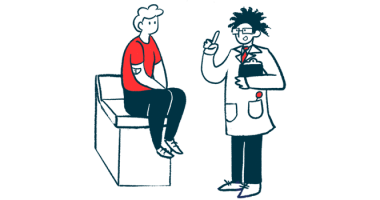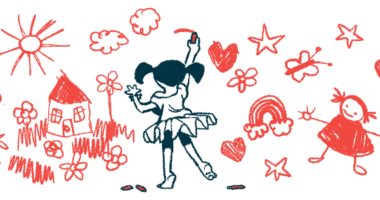Sleep Apnea Can Worsen in PWS Children on Growth Hormone Therapy

In a “significant subset” of children with Prader-Willi syndrome (PWS), obstructive sleep apnea worsened after the start of growth hormone therapy, a study of patients in Australia found.
“Our results offer support for the current advice to perform follow-up polysomnography [sleep breathing study] in children with Prader-Willi syndrome after growth hormone is initiated,” the researchers wrote.
The study, “Sleep-disordered breathing in Australian children with Prader-Willi syndrome following initiation of growth hormone therapy,” was published in the Journal of Paediatrics and Child Health.
Growth hormone (GH) therapy has improved height and body composition in children with PWS, a disorder characterized by weak muscles, slow growth, developmental delays and learning difficulties, and a constant feeling of insatiable hunger, and breathing problems.
Disturbed breathing during sleep is well documented in PWS patients. Still, studies examining the impact of growth hormone therapy on sleep-disordered breathing in PWS have produced mixed results. As such, debate is ongoing into the usefulness of measuring breathing during sleep — known as polysomnography — after starting on growth hormone therapy.
In Australia, polysomnography is required within 12 months before growth hormone therapy, and again within the first 32 weeks (about seven months) of treatment. These requirements have created an opportunity to assess the utility of ongoing sleep studies in children with PWS receiving growth hormone therapy.
“This study sets out to analyse the short-term relationships between the initiation of GH therapy in young children with PWS and central and obstructive sleep-disordered breathing using repeated [polysomnography],” the researchers based at the University of Western Australia wrote. “To our knowledge, this is the largest study to date investigating the course of sleep-related breathing disorders in relation to GH initiation in children with PWS.”
The team examined medical records of selected PWS patients with polysomnography tests before and after growth hormone therapy. Polysomnography specifically measured either the stoppage of breathing (apnea) or shallow breathing episodes (hypopnea) to generate an apnea-hypopnea index (AHI) measured per hour of sleep.
The two types of sleep-disordered breathing are obstructive sleep apnea (OSA), which is caused by partially or wholly blocked airways during sleep, and central sleep apnea (CSA), when the brain sends improper signals to the muscles that control breathing, causing repeat stops in breathing while asleep.
In total, 112 children ranging in age from early infancy to 13.5 years were selected, of whom 50 were female. For the final analysis, 18 children were excluded due to required breathing support, which can affect the results, or to a finding of severe OSA before growth hormone treatment.
In the remaining 94 children, the comparative analysis showed no significant difference between an obstructive AHI before growth hormone therapy and after its initiation (0.4 vs. 0.5 apnea events per hour).
During follow-up, however, 12 children (13%) worsened from normal or mild OSA (up to four events/hour) to moderate (five to nine events/hour) or severe OSA (10 or more events/hour). Although changes in AHI in younger children and those older than 3 years were similar, larger changes over a shorter period were seen in the younger children.
“Development of moderate–severe OSA could not be explained by changes in body weight and appeared to be more pronounced in the children under 3 years of age,” the researchers wrote.
Restricting the analysis to 83 children who did not undergo surgery to remove the adenoid glands or tonsils, which can impact breathing during sleep, did not significantly affect results before and after growth hormone treatment (0.3/hour vs. 0.5/hour). Of this group, 10 children (12%) developed moderate or severe obstructive sleep apnea.
An assessment of 11 children who had ear, nose, or throat (ENT) surgery before the first sleep study identified two (18%) who progressed to moderate or severe OSA after both their adenoid glands and tonsils were removed.
At follow-up, the likelihood of having moderated or severe OSA was not significantly associated with body mass index (BMI), a measure of body fat.
No changes in central AHI were seen in the 94 children from before and after the start of growth hormone therapy (1.4/hour vs. 1.5/hour). Of these patients, 18 (19%) had central sleep apnea before treatment, and 14 (15%) after treatment. Changes were similar regardless of age.
“Our study provides evidence that a significant subset of children develops moderate/severe OSA, particularly in the first months after the initiation of GH,” the researchers wrote. “Although causality cannot be inferred, our data offer support for the standard screening for development of OSA within the first 6 months after GH initiation, as is currently standard practice in Australia.”







